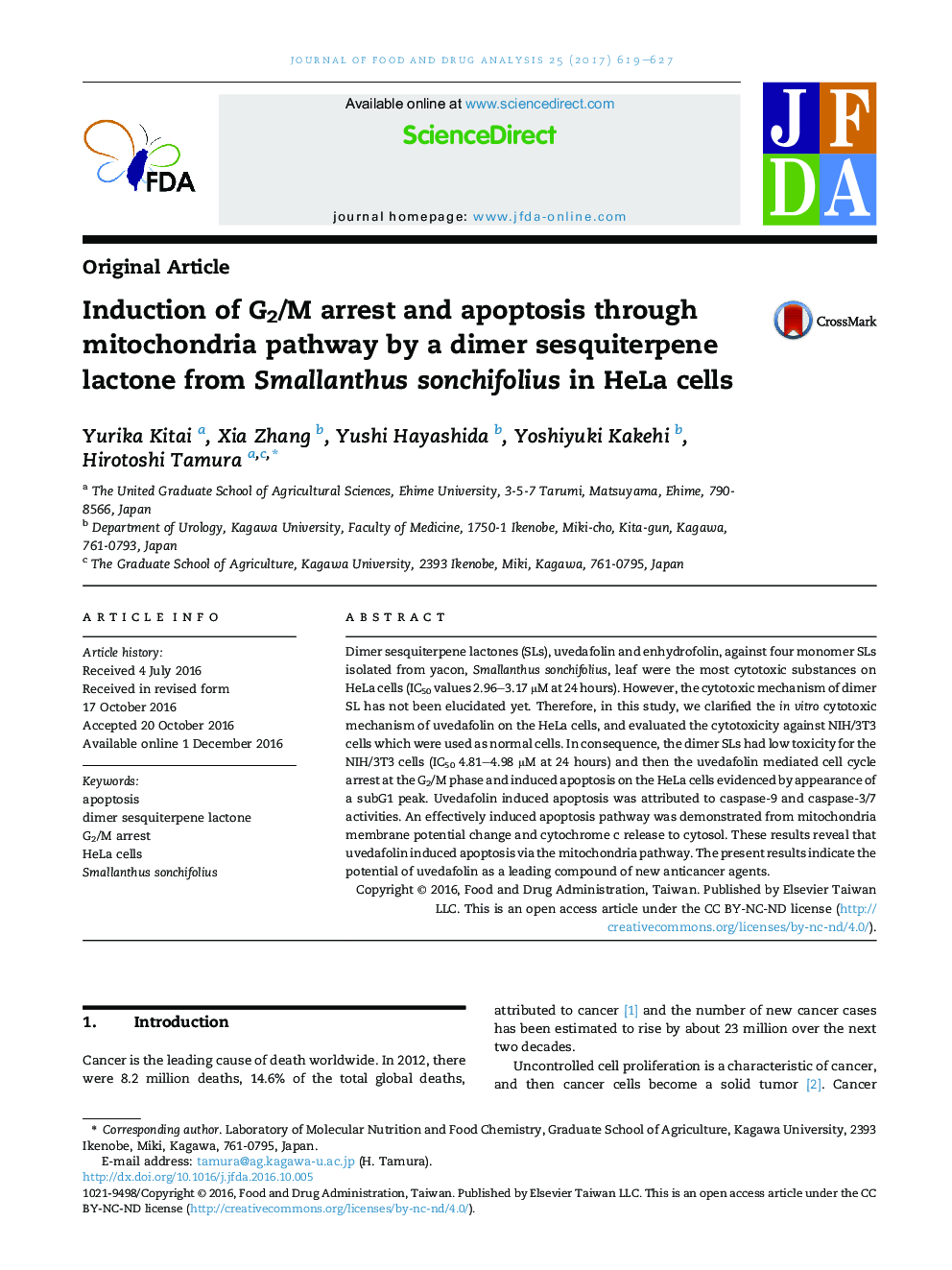| Article ID | Journal | Published Year | Pages | File Type |
|---|---|---|---|---|
| 5551046 | Journal of Food and Drug Analysis | 2017 | 9 Pages |
â¢The cytotoxicity of uvedafolin was dose- and time-dependent manner on the HeLa cells.â¢The dimer SLs were of low toxicity for the NIH/3T3 (normal) cells.â¢Uvedafolin induced G2/M phase arrest and apoptosis on the HeLa cells.â¢Uvedafolin induced apoptosis which was mediated by caspase activation and cytochrome c release from mitochondria.
Dimer sesquiterpene lactones (SLs), uvedafolin and enhydrofolin, against four monomer SLs isolated from yacon, Smallanthus sonchifolius, leaf were the most cytotoxic substances on HeLa cells (IC50 values 2.96-3.17 μM at 24 hours). However, the cytotoxic mechanism of dimer SL has not been elucidated yet. Therefore, in this study, we clarified the in vitro cytotoxic mechanism of uvedafolin on the HeLa cells, and evaluated the cytotoxicity against NIH/3T3 cells which were used as normal cells. In consequence, the dimer SLs had low toxicity for the NIH/3T3 cells (IC50 4.81-4.98 μM at 24 hours) and then the uvedafolin mediated cell cycle arrest at the G2/M phase and induced apoptosis on the HeLa cells evidenced by appearance of a subG1 peak. Uvedafolin induced apoptosis was attributed to caspase-9 and caspase-3/7 activities. An effectively induced apoptosis pathway was demonstrated from mitochondria membrane potential change and cytochrome c release to cytosol. These results reveal that uvedafolin induced apoptosis via the mitochondria pathway. The present results indicate the potential of uvedafolin as a leading compound of new anticancer agents.
Graphical abstractDownload high-res image (340KB)Download full-size image
